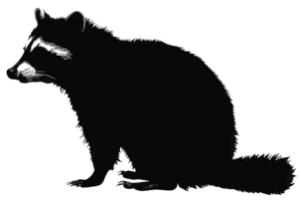What Does Bird Removal Cost?
When most people think of birds, they think of majestic hunters of the air, beautiful plumes, and pretty bird songs. However, birds can also be pests and cost you money in property damage. If you find yourself in that situation, you might be asking yourself, “How much does bird removal cost?”
There are a lot of variables for the total cost of bird removal. Here, we will try to cover the majority of them to give you a good idea of how much removing your bird problem will cost you.
How Much Does Bird Removal Cost?
The national average for bird removal services is roughly $500. At the low range, prices tend to come in around $90 and at the high end, it could run as much as $2,000. The total cost for bird removal services depends on the species of bird to be removed, the number of animals present, the location of the infestation, the endangered status of the animals at issue, and any other wildlife-related complications, just to name a few of the most important variables affecting bird removal cost.
The Cost of Bird Nest Removal
The bird nests you will most often are in high tree-tops or on top of heavy power poles. But most birds, like most creatures, prefer to build their nests inside a protective structure like a cave entrance, a barn loft, or the eaves of a house. If you have birds nested inside your outer roof vents or soffits, they can cause a great deal of damage. The removal process can also involve the removal of vents. This usually causes damage to the exterior of the home requiring some repair work after the removal is complete. This will add to the overall cost of the event but is unlikely to be included in the cost of the bird removal service. In some cases, a contractor may need to work with the bird removal experts to gain access to the nest or nests.
Birds nested within structures are certain to cause enormous damage over time if not dealt with at least within the first season in which the infestation is noticed. The simple reason for this is bird feces has the ability to be quite voluminous and it can easily seep into the wood, the spaces between structures, and into the insulation. This will result in mold, insect infestations, rotting damage to the structure, and very unpleasant odors.
The good news is that after you have detected a bird infestation, the best way to keep the costs low is to have them removed as soon as possible.
When to Have Birds Removed
Fortunately, most birds are extremely skittish animals. Because their only defense is flight, they are extremely sensitive to the presence or potential presence of animals that could threaten them. This goes doubly for humans. Most people have heard that if a human touches a baby bird, the parent will reject it because of the smell of the oils that come from human skin. This has been known to happen but it is not as common as we tend to think. Still, birds are very sensitive to smells as well as any other signs of trouble.
What all of this means is that most birds will never make their homes in your home. The important caveat to this is that those few bird species that will intrude on the spaces closest to your home and family are some of the worst, most disease-carrying types of birds known.
Which Bird Species are the Most Troublesome?
The most troublesome species of bird are:
- Pigeons: up to 11 inches in length with grayish coloration, black bars on the wings and red feet
- House Sparrows: 5 to 7 inches in length, light brown or reddish-brown in color with a gray underbelly and streaks of black
- European Starlings: 6 inches in length, dark in color with faint speckles
These birds are considered vermin due to the fact that they are invasive species, not native to North America. These birds come in large numbers, breed quickly, and are known to carry a long list of diseases.
Before having any bird species removed, or removing them yourself, it’s important to know if the species is protected by law and how dangerous it may be.
Your local bird removal professional will have this information readily at hand.





















